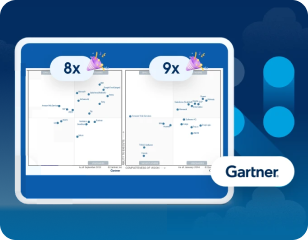public abstract class AppleMixin
{
AppleMixin(@JsonProperty("bitten") boolean wasBitten)
{
super();
}
}javaMigrating the JSON Module
|
This version of Mule reached its
End of Life Deployments of new applications to CloudHub that use this version of Mule are no longer allowed. Only in-place updates to applications are permitted. MuleSoft recommends that you upgrade to the latest version of Mule 4 that is in Standard Support so that your applications run with the latest fixes and security enhancements. |
A new JSON module in Mule 4 replaces the one that was bundled in with Mule 3 for schema validation.
To migrate transformations involving JSON, MuleSoft recommends that you use DataWeave.
Migrating Transformers
In Mule 3, many components required the payload to be a POJO so that its fields could be accessed. In Mule 4, DataWeave can be used as a query language directly on the JSON payload, which completely avoids the need to convert the payload to a POJO as an intermediate step.
JSON to Object Transformer
For mapping rules that are configured for the json:json-to-object-transformer, you can express the rules in DataWeave.
-
In Mule 3:
Example: Mixin used in the Mapper Configuration
Example: Transformer Referencing the Mapper
<json:mapper name="myMapper"> <json:mixin mixinClass="org.mule.module.json.transformers.AppleMixin" targetClass="org.mule.tck.testmodels.fruit.Apple"/> </json:mapper> <flow name="flow"> <json:json-to-object-transformer returnClass="org.mule.tck.testmodels.fruit.Apple" mapper-ref="myMapper"/> </flow>xml -
In Mule 4:
Example: Using DataWeave as the Mapper
<flow name="flow"> <ee:transform> <ee:message> <ee:set-payload> <![CDATA[%dw 2.0 type apple = Object { class: "org.mule.tck.testmodels.fruit.Apple"} output application/java --- { wasBitten = bitten } as apple ]]> </ee:set-payload> </ee:message> </ee:transform> </flow>xml
You don’t have to define a mapper or a mixin class in Mule 4. The mapping rules are defined using DataWeave code.
Object to JSON Transformer
The mapping rules for the json:object-to-json-transformer are also expressed using DataWeave:
In Mule 3:
-
Example: Transformer with Mixins
<flow name="flow"> <json:object-to-json-transformer returnClass="org.mule.tck.testmodels.fruit.Apple"> <json:serialization-mixin mixinClass="org.mule.module.json.transformers.AppleMixin" targetClass="org.mule.tck.testmodels.fruit.Apple"/> </json:object-to-json-transformer> </flow>xml
In Mule 4:
-
Example: Using DataWeave as the Mapper
<flow name="flow"> <ee:transform> <ee:message> <ee:set-payload> <![CDATA[%dw 2.0 output application/json --- { bitten = wasBitten } ]]> </ee:set-payload> </ee:message> </ee:transform> </flow>xml
In Mule 4 you can set the output format in the transformation. In this case, the expression defines the output as application/json, so the transformation function returns a JSON payload.
Migrating XSLT Operations
In Mule 4, the JSON module does not provide a component that transforms the JSON based on an XSLT mapping. Possible ways to handle this case are:
-
Migrate the XSLT to a DataWeave transformation (recommended)
-
Use XSLT support of the XML module, first converting the payload to XML.
<flow name="flow">
...
<xml-module:xslt-transform>
<xml-module:content>#[output application/xml --- payload]</xml-module:content>
<xml-module:xslt>
(the XSLT transformation) ...
</xml-module:xslt>
</xml-module:xslt-transform>
...
</flow>xml


